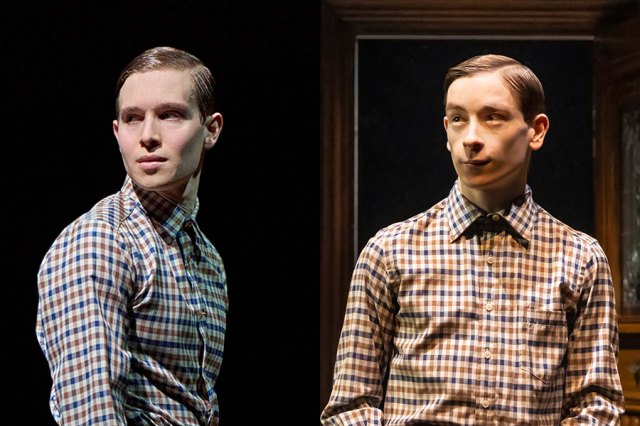Review: Body Through Which the Dream Flows and the Power Politics in Competitive Gymnastics
Soomi Kim brings the intensity of top-level gymnastics to a tiny stage.
Take a look at Larisa Latynina’s gold medal floor exercise from the 1956 Olympics and you will see a gymnastic routine that, with some hard work and determination, you might be able to replicate. Compare that with the gold medal routine Simone Biles performed at the 2016 Rio games. The superhuman qualities of the latter show how half a century of televised gymnastics (leading to expanded interest and a larger pool of competitors) has vaulted this sport into the stratosphere, where the world’s top gymnasts push their bodies to the outer limits of human endurance in the quest to join the pantheon of Olympic heroes. This has also led to the proliferation of gyms, coaching programs, and sports medicine to support that dream — which has occasionally mutated into a nightmare for some athletes.
That is the subject of Soomi Kim’s Body Through Which the Dream Flows, which is now making its world premiere at the Tank in what is likely the most physically impressive show ever presented on that stage. It stars Kim and a company of six remarkably agile young gymnasts (Olivia Caraballoso, Ai Clancy, Shayna Wilson, Madison Rodriguez, Nora Avci, and Amaya Cofre). Kim has previously created theatrical pieces about Bruce Lee and activist Kathy Change; she has also worked as a competitive gymnastics coach at Chelsea Piers, which almost certainly paid her bills more reliably than off-off-Broadway theater.
Kim weaves her own story of brushing against the heights of NCAA competition (and leveraging that into a coaching gig) through the hopes and fears of the young gymnasts onstage: Strict expectations about weight, the dread of injury, and tough coaching methods that verge on abuse all come in for examination. Their stories are mostly prerecorded and presented in an appropriately nervous soundscape created by Zëk Stewart (no relation). This allows the gymnasts to focus on performing backflips, cartwheels, and handstands — the fruit of their hard work and sacrifice. The choreography by Kim and the company is especially awe-inspiring on the Tank’s tiny proscenium stage.
Kim devotes a chunk of the one-hour piece to scrutinizing the legacy of Béla and Márta Károlyi, the Hungarian-Romanian immigrants whose coaching methods have made the USA a dominant force in international competitions — at a cost. The Károlyis are demanding perfectionists who have encouraged their athletes to push through the pain even when injured (most famously with Kerry Strug’s vault at the 1996 Olympics). Such methods require serious medical support, and for nearly two decades that came in the form of team doctor Larry Nassar, who in 2018 was convicted on several counts of sexual assault, much of which was perpetrated at the Károlyis’ training center. The Károlyis claim they were unaware that any of this was going on — but when all you see is gold, what other things do you willfully ignore?
The most dramatically thrilling section comes near the end of the piece, with Kim and Caraballoso circling each other and performing a kind of gymnastic capoeira. Underscoring the stage action is a debate between athlete and coach (voiced by Lucy Meola and Kim) in which the former expresses her sense of betrayal, while the latter questions the zeal of reformers who are happy to cancel first and ask questions never. This passage comes the closest to distilling the heart of the matter as power shifts from coaches to competitors.
Unfortunately, Body is rarely that focused. There is a segment about pandemic-era Zoom gymnastics (which seems even drearier than Zoom theater). Kim also performs a solo dance about the surge of anti-Asian hate crimes. There is an argument to be made that all of these things are related, but Kim and co-director Meghan Finn do not sufficiently connect the dots.
That’s too bad because Kim is tumbling around big questions that are just now coming to America’s collective attention: What are parents willing to tolerate in the effort to catapult their children into prestige, whether it is in a gymnasium, at an Ivy League university, or on a Broadway stage? When does an activity that you love transition into the only way you know how to be loved? And when does a reckoning with past abuse cross the line into an excuse for future mediocrity? These questions are bound to become even more pronounced as elite overproduction ensures that there are always hundreds of applicants for every available dream. With Body Through Which the Dream Flows, Kim forces us to look at the body count.








